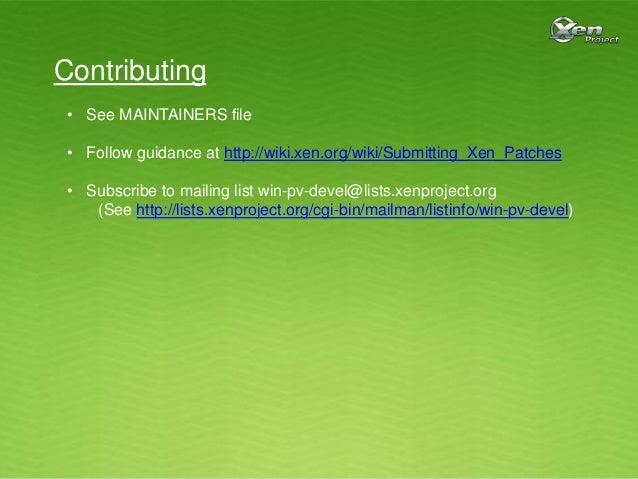- Import and export of libvirt domain XML configs
The libvirt libxl driver provides the ability to manage virtual machines on any Xen release from 4.6.0 onwards.
- The Xen hypervisor on Linux and Solaris hosts
The libvirt libxl driver uses Xen's libxl API, also known as libxenlight, to implement libvirt's hypervisor driver functionality. libxl provides a consolidated interface for managing a Xen host and its virtual machines, unlike old versions of Xen where applications often had to communicate with xend, xenstored, and the hypervisor itself via hypercalls. With libxl the only pre-requisit is a properly installed Xen host with the libxl toolstack running in a service domain (often Domain-0).
The libvirt libxl driver is a single-instance privileged driver, with a driver name of 'xen'. Some example connection URIs for the libxl driver are:
The libxl driver currently supports three native config formats. The first, known as xen-xm, is the original Xen virtual machine config format used by the legacy xm/xend toolstack. The second, known as xen-sxpr, is also one of the original formats that was used by xend's legacy HTTP RPC service (removed in 5.6.0)
The third format is xen-xl, which is the virtual machine config format supported by modern Xen. The xen-xl format is described in the xl.cfg(5) man page.
To install a driver on your target system, unpack the tarball, then navigate to either the x86 or x64 subdirectory (whichever is appropriate), and execute the copy of dpinst.exe you find there with Administrator privilege. More information can be found here. You can also get the drivers via https://xenbits.xenproject.org/pvdrivers/win/9.0.0/. Universal Print Driver Enables users to use various printing devices. Device Software Manager Detects the applicable MFPs and printers on your network or connected PCs via USB. Citrix Support A single, intelligent advanced driver, which can be used across your fleet of multifunction and laser printers. Legacy InfoPrint Workgroup Printer Support. XenServer 7.0 is available for download from the XenServer Downloads page. Customers should install: XenServer 7.0 Base Installation ISO XenCenter 7.0 Windows Management Console Refer to the XenServer 7.0 Installation Guide for comprehensive details on installation. Refer to the official Citrix documentation for the detailed steps for your specific version of XenApp or XenDesktop. Note: If you have already set up UPM, go to Step 4. Step 1: Download the package Download the latest version of Citrix UPM from the Citrix download page, and then select the UPM for your version of XenApp or XenDesktop. Download AMD MxGPU drivers from the AMD download site, including AMD MxGPU host drivers for XenServer and guest drivers for virtual machines. To run XenDesktop with VMs running AMD MxGPU, you also need XenDesktop 7.13 or later, full installation. 64-bit versions of Windows 7, Windows 10 and Windows Server 2016 VMs.
The virsh domxml-from-native provides a way to convert an existing set of xl, xm, or sxpr config files to libvirt Domain XML, which can then be used by libvirt.
The virsh domxml-to-native provides a way to convert a guest description using libvirt Domain XML into xl, xm, or sxpr config format.
Since 6.7.0, the Xen driver supports passing arbitrary command-line arguments to the qemu device model used by Xen with the <xen:commandline> element under domain. In order to use command-line pass-through, an XML namespace request must be issued that pulls in http://libvirt.org/schemas/domain/xen/1.0. With the namespace in place, it is then possible to add <xen:arg>sub-elements to <xen:commandline> describing each argument passed to the device model when starting the domain.
Download Xen Driver Download
The following example illustrates passing arguments to the QEMU device model that define a floppy drive, which Xen does not support through its public APIs:
Below are some example XML configurations for Xen guest domains. For full details of the available options, consult the domain XML format guide.
Download Xen Tools For Windows
Paravirtualized guest bootloader
Xen For Windows
Using a bootloader allows a paravirtualized guest to be booted using a kernel stored inside its virtual disk image
Paravirtualized guest direct kernel boot
Download Xen Drivers

For installation of paravirtualized guests it is typical to boot the domain using a kernel and initrd stored in the host OS
Fullyvirtualized guest BIOS boot
Fullyvirtualized guests use the emulated BIOS to boot off the primary harddisk, CDROM or Network PXE ROM.
Fullyvirtualized guest direct kernel boot
With Xen 3.2.0 or later it is possible to bypass the BIOS and directly boot a Linux kernel and initrd as a fullyvirtualized domain. This allows for complete automation of OS installation, for example using the Anaconda kickstart support.